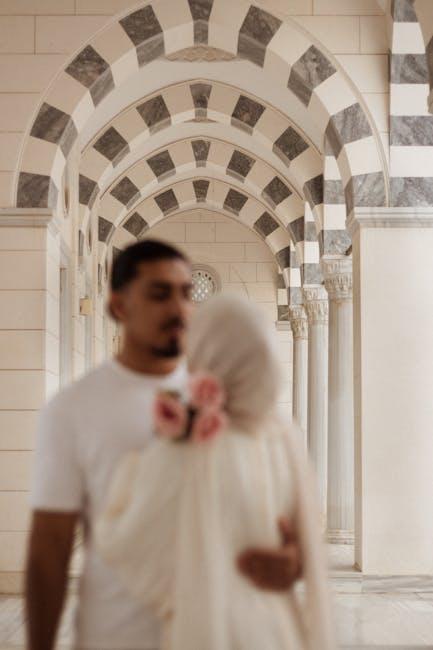In the intricate dance of human connection, relationships can be both our greatest source of joy and our deepest well of confusion. Often, we find ourselves entangled in patterns that feel familiar yet unsettling, like an echo of past experiences that refuse to fade. Recognizing these unhealthy dynamics is the first step toward liberation, allowing us to reshape our interactions and nurture more fulfilling bonds. This article delves into the subtle art of identifying these patterns, offering insights and strategies to break free and foster healthier, more harmonious relationships. Join us as we explore the path to clarity and transformation, where awareness becomes the catalyst for change.
Identifying Toxic Communication Signals
In the intricate dance of relationships, communication is the rhythm that keeps partners in sync. However, certain signals can disrupt this harmony, revealing underlying toxicity. Recognizing these signs is crucial for fostering a healthier connection. One of the most telling indicators is constant criticism, where one partner frequently finds faults in the other, eroding self-esteem and mutual respect. Another red flag is stonewalling, a tactic where one partner withdraws from the interaction, refusing to communicate or engage emotionally, leaving the other feeling isolated and unheard.
Pay attention to the presence of passive-aggressive behavior, where indirect expressions of hostility replace open dialogue, creating an environment of tension and misunderstanding. Additionally, be wary of gaslighting, a manipulative tactic that makes the victim question their reality and sanity. Look out for these subtle yet damaging signals:
- Deflecting Blame: Never taking responsibility and always shifting fault onto others.
- Dismissive Attitude: Undermining or trivializing a partner’s feelings or opinions.
- Intimidation: Using threats or aggressive behavior to control or dominate.
Understanding and identifying these toxic signals is the first step towards breaking unhealthy patterns and cultivating a more supportive and nurturing relationship.

Understanding Emotional Manipulation
At the core of many unhealthy relationships lies a subtle yet powerful force: emotional manipulation. This insidious behavior often masquerades as care or concern, making it challenging to identify. Recognizing the signs requires a keen awareness of certain tactics used to control or influence emotions. Gaslighting is one such method, where the manipulator makes you doubt your own perceptions or memories. Another common tactic is guilt-tripping, where blame is shifted to you, making you feel responsible for their emotional state.
To break free from these patterns, it’s crucial to trust your instincts and set firm boundaries. Here are some steps to consider:
- Trust your feelings: If something feels off, it probably is.
- Set clear boundaries: Clearly communicate what is acceptable and what is not.
- Seek support: Talk to friends or a therapist to gain perspective.
- Prioritize self-care: Engage in activities that reinforce your self-worth.
By understanding these dynamics and taking proactive steps, you can begin to dismantle the unhealthy patterns that have taken root.

Strategies for Setting Healthy Boundaries
Establishing healthy boundaries is essential for nurturing respectful and fulfilling relationships. Begin by identifying your personal limits and communicating them clearly and assertively. It’s crucial to recognize that setting boundaries is not about shutting others out but about protecting your well-being. Here are some strategies to consider:
- Self-Reflection: Take time to understand your needs and what makes you uncomfortable. Journaling or meditating can help clarify these thoughts.
- Communicate Clearly: Use “I” statements to express your boundaries. For example, “I need time to myself after work to recharge.”
- Be Consistent: Reinforce your boundaries consistently to prevent mixed signals and confusion.
- Respect Others: Acknowledge and respect the boundaries set by others, fostering mutual understanding.
- Seek Support: If you’re struggling, consider seeking guidance from a therapist or counselor who can provide additional strategies and insights.
By implementing these strategies, you can create a healthier dynamic in your relationships, paving the way for more positive interactions and personal growth.

Building Lasting Positive Change
To cultivate meaningful transformations, it’s essential to understand the foundation of our interactions. Recognizing unhealthy patterns involves observing recurring themes that sabotage harmony and growth. These patterns might include:
- Communication Breakdown: Frequent misunderstandings or avoidance of difficult conversations.
- Codependency: Losing individual identity while excessively relying on each other for emotional support.
- Control Dynamics: One partner consistently dominating decisions or behaviors.
Breaking free from these cycles requires intentional actions and a commitment to self-awareness. Start by identifying personal triggers and understanding their roots. Foster open dialogue with your partner, where honesty is encouraged and judgment is suspended. Embrace change as a shared journey, celebrating small victories along the way. By nurturing a space where both individuals feel valued and heard, lasting positive change becomes not only possible but inevitable.




